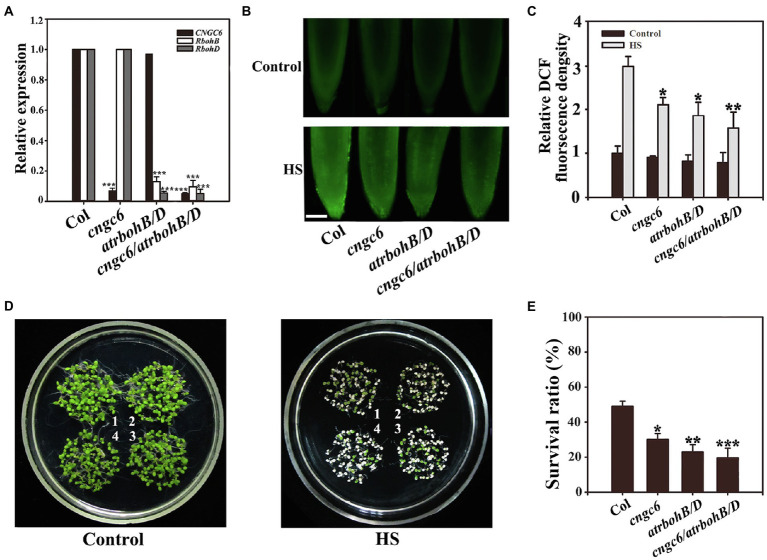Figure 5.
Survival status of the cngc6/rbohB/D triple mutant. (A) RT-qPCR analysis of cyclic nucleotide-gated ion channel 6 (CNGC6), RbohB and RbohD transcription in wild-type, cngc6, rbohB/D, and cngc6/rbohB/D seedlings. The experiments were repeated three times with similar results. Each data point represents the mean ± SD (n = 3). Asterisks indicate a significant difference relative to Col; ***p < 0.001 (Student’s t-test). (B) About 8-day-old wild-type, cngc6, rbohB/D, and cngc6/rbohB/D seedlings grown at 22°C were exposed to 45°C (HS) or maintained at 22°C (Control) for 30 min. The H2O2 levels in the seedlings were then examined by fluorescence microscopy using roots stained with CM-H2DCFDA. Bar = 100 μm. (C) Relative DCF fluorescence densities in the roots. The data presented are the means ± SE of measurements taken from five independent experiments with at least 10 roots for each treatment. *p < 0.05, and **p < 0.01 vs. Col (Student’s t-test). (D) About 8-day-old seedlings grown at 22°C were exposed to 45°C (HS) or maintained at 22°C (Control) for 100 min, then returned to 22°C and photographed 5 days later. The clusters are as follows: 1, wild-type; 2, cngc6; 3, rbohB/D; and 4, cngc6/rbohB/D. (E) Survival ratios of the seedlings after HS treatment. The data presented are the means ± SE of at least five independent experiments with 50 seedlings per experiment. *p < 0.05 and **p < 0.01 vs. Col (Student’s t-test).

